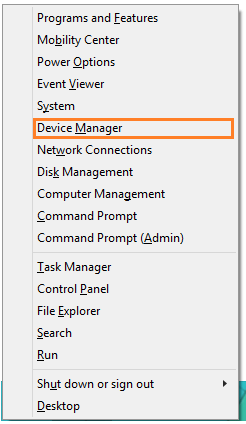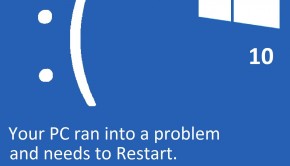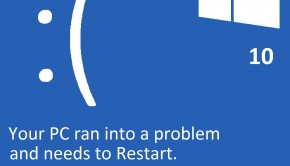How To Fix System_Service_Exception Blue Screen Erorrs In Windows 8
Reader Question:
“Hi Wally, Yesterday my Windows 8 laptop started acting funny. It shows a blue screen and restarts. I don’t know whats causing this problem. I’m using Windows 8, please help.“ - Eric L., Australia
Before addressing any computer issue, I always recommend scanning and repairing any underlying problems affecting your PC health and performance:
- Step 1 : Download PC Repair & Optimizer Tool (WinThruster for Win 10, 8, 7, Vista, XP and 2000 – Microsoft Gold Certified).
- Step 2 : Click “Start Scan” to find Windows registry issues that could be causing PC problems.
- Step 3 : Click “Repair All” to fix all issues.
Setting up weekly (or daily) automatic scans will help prevent system problems and keep your PC running fast and trouble-free.
Wally’s Answer: Windows 8 is a very stable operating system but sometimes even Windows 8 can start having problems. Most people who have encountered blue screen errors have upgraded from Windows 7 or another version of Windows.
Here are some common blue screen errors and how to fix them:
How To Fix Windows 8.1 BSOD System_Service_Exception
This error usually occurs when the computer starts or a few minutes after Windows has already started. This error is quite daunting because the Windows 8 DVD’s Automatic Repair tool does not report any problems with Windows 8. When the sfc command is used, it says that the computer has some corrupt system files but they cannot be fixed.
Solution
One thing that you can do is to reinstall the graphics driver. You should also try to upgrade all device drivers on your computer to make sure that it is not a driver issue. You can do this by using the Windows device manager. Drivers can also be easily updated using utility software like DriverDoc. Using the device manager is a bit tedious but it gets the job done, here’s how to do it:
- Press Windows Key+X and click the Device Manager button from the list.

- When Device Manager starts, click the arrow next to the driver you want to update.

- Right-click the device name and then click Update Driver Software…
- This will update the driver if a new driver was available.
- You can repeat these steps later to see if a new driver is available or use DriverDoc. It will automatically ask to update the driver when it becomes available.
If this doesn’t work then you should consider reinstalling Windows 8. You can do that by using the Reset Your PC feature in Windows 8 and 8.1
I Hope You Liked This Blog Article! If You Need Additional Support on This Issue Then Please Don’t Hesitate To Contact Me On Facebook.
Is Your PC Healthy?
I always recommend to my readers to regularly use a trusted registry cleaner and optimizer such as WinThruster or CCleaner. Many problems that you encounter can be attributed to a corrupt and bloated registry.
Happy Computing! ![]()

Wally's Answer Rating
Summary: Every Windows Wally blog post is evaluated on these three criteria. The average of all three elements determines an "Overall Rating" for each blog post.














